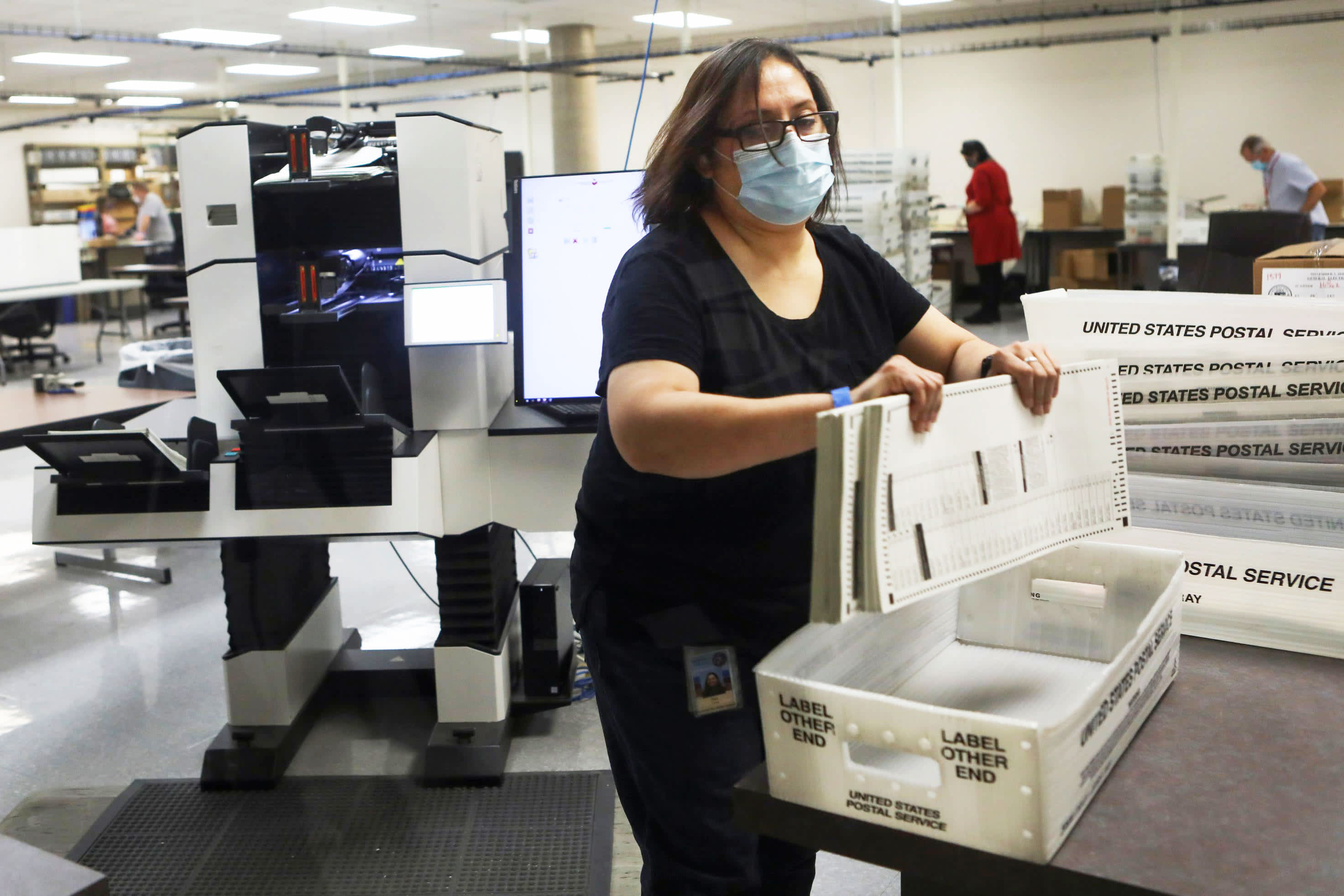The president for the next four years gets a surprisingly strong jobs market

Election workers count ballots at the Maricopa County Tabulation and Election Center (MCTEC), in Phoenix, Arizona, November 6, 2020.
Jim Urquhart | Reuters
Whomever occupies the Oval Office in 2021 will face a challenging economy, but an employment picture that at least seems to have some unexpected momentum.
The 638,000 nonfarm payrolls gain in October underscored both the resilience of the economic system as well as how far the business community has to go yet from the damage done during the first two months of the coronavirus pandemic.
March and April saw the loss of 22 million jobs, 12.1 million of which have been recovered. That means companies are still hiring, but lots of workers – 11.1 million – are still looking for jobs and themselves face a challenging landscape ahead.
Near the top of the president’s agenda, whether it’s Joe Biden or Donald Trump, will be to continue mending the fractured jobs market.
“We definitely are seeing signs of recovery in demand in every pocket of the labor market,” said Karen Fichuk, CEO of Randstad North America, a global human relations and staffing service. “The next president will have a changing labor market. We still have nearly half the people that have been unemployed that we have to put back to work. That’s the job.”
When he took office in 2017, Trump inherited a labor market that was still producing 176,000 jobs a month but looked to be running out of steam as economists were predicting much slower gains ahead.
Instead, payroll growth continued apace, with monthly payroll increases averaging 173,000 a month through the end of 2019. A few months later, though, the world hit the Covid-19 buzzsaw that saw much of the U.S. economy go into forced hibernation.
New skills, new jobs
The services sector generally and hospitality businesses specifically took a particularly hard hit from which they are still recovering.
Though there’s still plenty of slack in the market, Fichuk said her firm is seeing high demand from firms looking to fill positions.
“There has been a shift in demand and some segments will never come back,” she said. “Workers have been displaced. We had some tough headwinds even before the pandemic.”
However, teaching workers new skills as their old jobs are phased out has become a priority during the Trump years and will remain so into the next four years, Fichuk added.
Randstad has seen a 35% increase in demand for information technology managers, 16% in software testers and 5% for software developers from September to October. Warehouse demand also has increased for a field that is seen as a good transition for displaced restaurant and bar workers.
Demand also has jumped 50% year over year for assemblers and there have been “stark” increases for call center and customer service positions.
Holiday hires
The continued efforts to fill positions is being seen across a number of sectors and is intensifying as the holiday season approaches.
“It’s always a busy time for us. This year is no difference. In fact, our numbers for seasonal positions have increased year over year, which is a great sign,” said Amy Glaser, senior vice president at job placement firm Adecco. “One of other trends is with the uptick in ecommerce and curbside pickup, we’re expecting the return season to last through January. Usually for seasonal workers it ends sometime in the middle of December. We’re definitely seeing an extension of that.”
Another encouraging sign Glaser noted is the ability of companies to adapt to the virus.
That’s important, with new cases running above 100,000 a day and worries growing that the U.S. could follow Europe into shutting down parts of its economy to stem the resurgence.
“Employers have learned a lot of lessons since the initial onslaught. They’ve really come up with better contingency plans,” Glaser said. “They are acknowledging the fact that employees are going to need to be quarantined or stay at home. They’re actually building a buffer to help cover any absences that occur.”
A proactive approach from business at least can help alleviate one headache that the president for the next four years will have to face. The economy improved at a record pace in the third quarter, but the future pace will depend on a variety of factors.
One slightly positive sign: The level of permanent job losses actually edged lower in October by 72,000, though it still remains well above the February pre-pandemic total.
“If you see that the permanent job losses start to decline, that really signals that the labor market has been gaining some traction,” said Michael Arone, chief investment strategist at State Street Global Advisors. “So far, most states have broadly resisted the urge to do too much on the restrictions compared to Europe. If that dynamic changes, absolutely it is a risk to the labor market.”




